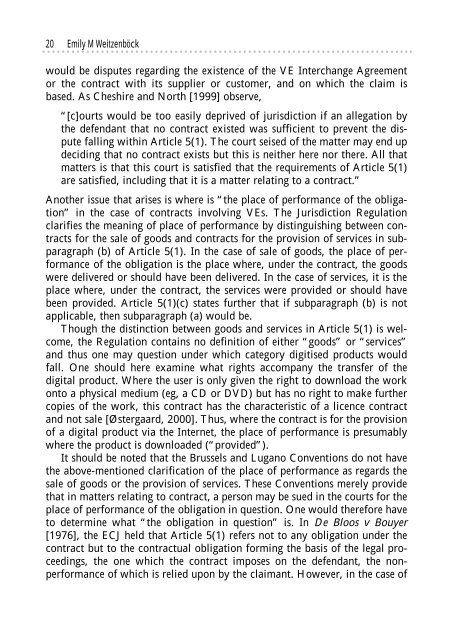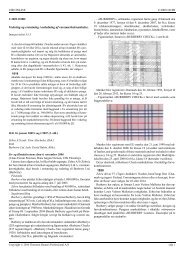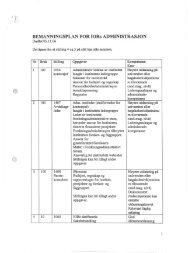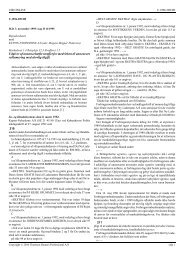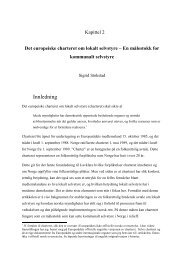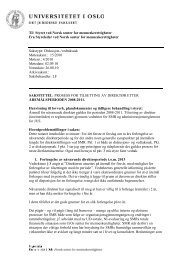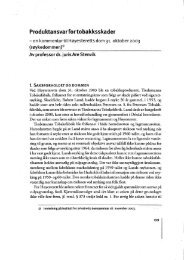Lee A. Bygrave (red.) YULEX 2002 - Universitetet i Oslo
Lee A. Bygrave (red.) YULEX 2002 - Universitetet i Oslo
Lee A. Bygrave (red.) YULEX 2002 - Universitetet i Oslo
Create successful ePaper yourself
Turn your PDF publications into a flip-book with our unique Google optimized e-Paper software.
............................................................................<br />
20 Emily M Weitzenböck<br />
would be disputes regarding the existence of the VE Interchange Agreement<br />
or the contract with its supplier or customer, and on which the claim is<br />
based. As Cheshire and North [1999] observe,<br />
“[c]ourts would be too easily deprived of jurisdiction if an allegation by<br />
the defendant that no contract existed was sufficient to prevent the dispute<br />
falling within Article 5(1). The court seised of the matter may end up<br />
deciding that no contract exists but this is neither here nor there. All that<br />
matters is that this court is satisfied that the requirements of Article 5(1)<br />
are satisfied, including that it is a matter relating to a contract.”<br />
Another issue that arises is where is “the place of performance of the obligation”<br />
in the case of contracts involving VEs. The Jurisdiction Regulation<br />
clarifies the meaning of place of performance by distinguishing between contracts<br />
for the sale of goods and contracts for the provision of services in subparagraph<br />
(b) of Article 5(1). In the case of sale of goods, the place of performance<br />
of the obligation is the place where, under the contract, the goods<br />
were delive<strong>red</strong> or should have been delive<strong>red</strong>. In the case of services, it is the<br />
place where, under the contract, the services were provided or should have<br />
been provided. Article 5(1)(c) states further that if subparagraph (b) is not<br />
applicable, then subparagraph (a) would be.<br />
Though the distinction between goods and services in Article 5(1) is welcome,<br />
the Regulation contains no definition of either “goods” or “services”<br />
and thus one may question under which category digitised products would<br />
fall. One should here examine what rights accompany the transfer of the<br />
digital product. Where the user is only given the right to download the work<br />
onto a physical medium (eg, a CD or DVD) but has no right to make further<br />
copies of the work, this contract has the characteristic of a licence contract<br />
and not sale [Østergaard, 2000]. Thus, where the contract is for the provision<br />
of a digital product via the Internet, the place of performance is presumably<br />
where the product is downloaded (“provided”).<br />
It should be noted that the Brussels and Lugano Conventions do not have<br />
the above-mentioned clarification of the place of performance as regards the<br />
sale of goods or the provision of services. These Conventions merely provide<br />
that in matters relating to contract, a person may be sued in the courts for the<br />
place of performance of the obligation in question. One would therefore have<br />
to determine what “the obligation in question” is. In De Bloos v Bouyer<br />
[1976], the ECJ held that Article 5(1) refers not to any obligation under the<br />
contract but to the contractual obligation forming the basis of the legal proceedings,<br />
the one which the contract imposes on the defendant, the nonperformance<br />
of which is relied upon by the claimant. However, in the case of


